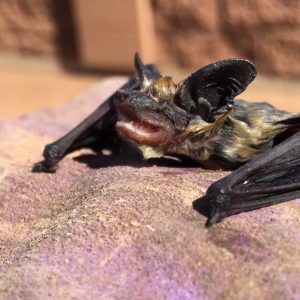IS BAT FECES DANGEROUS TO TOUCH OR BREATHE?

Bat guano (droppings/feces) is extensively known to be among the finest organic fertilizers readily available. It is triggered by a fungus, Histoplasma capsulatum, the source of histoplasmosis, which is likewise known as caver’s illness, spelunkers’ lung, and in the medical neighborhood, as reticuloendotheliosis. It travels by spores and individuals contract it by breathing contaminated air. Look for Rochester Hills Michigan bat control for help.
Many individuals who contract the illness often show no obvious ill effects however they can experience non-specific respiratory cough and flu-like symptoms such as fever, chest discomfort, dry cough, shortness of breath, and joint and muscle pain. Histoplasmosis can likewise resemble tuberculosis and it can in fact be deadly if it spreads to other organs. Individuals who would be especially vulnerable consist of those with weakened body immune systems, are undergoing chemotherapy, or are heavy smokers.
Where the dropping can be found
Even when fresh, bat droppings are in the form of tiny, desiccated pellets, and as they build up below the roost they end up being ever drier, basically taking the type of dust. This especially positions a risk for individuals who need to work in such environments, such as chimney cleaners, A/C installers, and roofing contractors. Such workers usually are sensible adequate to secure themselves with an air purification mask.
If you believe you must tidy up an attic or old structure where a nest of bats has actually roosted, take similar precautions. A mask that can filter particle matter of one milli-micron diameter is recommended, and specialists also suggest that you use protective clothing. To keep the dust down you can spray a mist of water over the contaminated spots where you intend to work.
Guano is all over the place

If a substantial stack of guano has actually built up, as it probably has if the colony has actually been there for a while, it is best to have it professionally removed if you wish to be rid of it. Any disturbance of the pile is going to lead to a haze of the pernicious dust. Experts are experienced with the issue and have the equipment and protective equipment that minimizes the dust and its risks.
It is not just attics and other household roosting websites that hold the threat. The fungi can grow in any area that has been polluted with bat or bird droppings, with most likely spots including poultry houses, caves, bird roosts, and similar enclosed areas– even garden soil. Outdoor locations usually posture no problem, however, it’s still smart to keep the dust down.
Why Get Rid Of Bat Droppings?
Having recognized bat poop in your attic, you must take action to remove it for various reasons.
The main concern with bat poop is that the fungi Histoplasma Capsulatum can grow and prosper on it. The breathing illness Histoplasmosis can trigger major health problems and, in severe cases, even death in people.
Bat droppings can trigger a seriously bad odor as well as staining in your home.
Bats defecate up to 30 times a day and a buildup of bat poop can even cause the structural collapse of beams and ceilings.
The guano will also draw in other pests, such as cockroaches which can lead to secondary problems and potential illness.
In any case, if you disturb a stack of old, dry bat droppings, particularly in a closed area, you are putting yourself at risk. Leave it to the pros.
Read More On